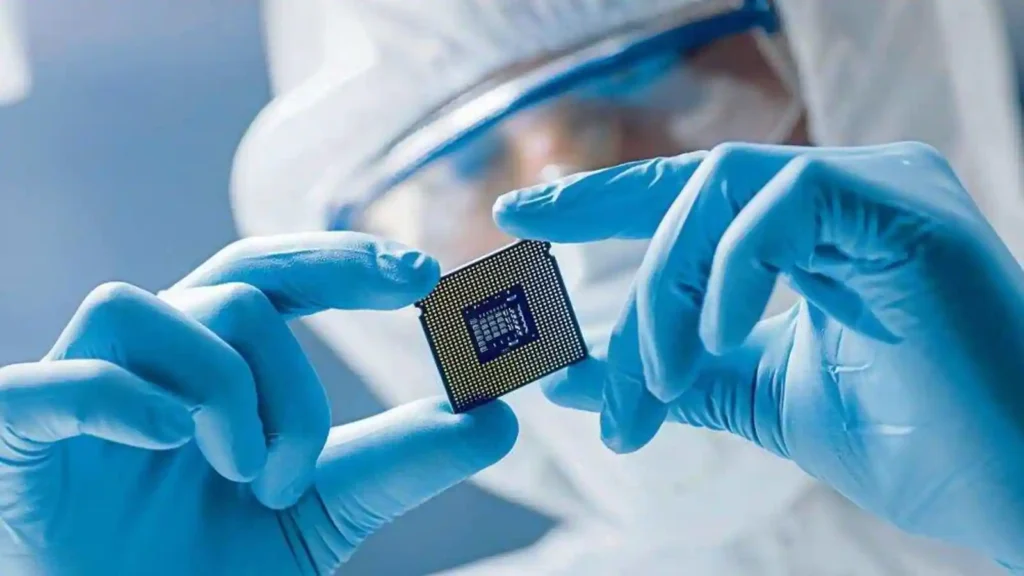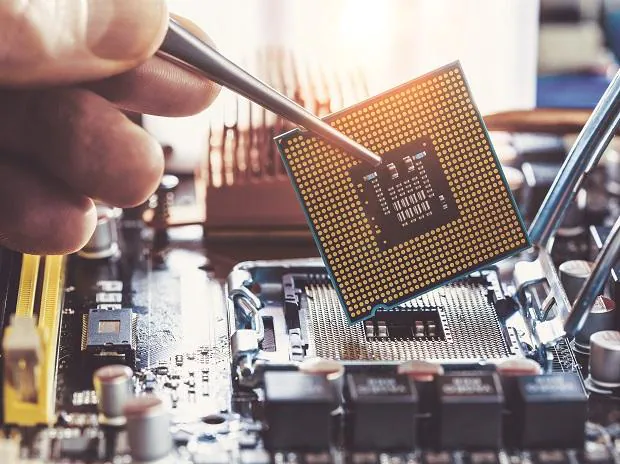Indian start-ups struggle to raise money despite having the best semiconductor design expertise in the world. One of the rare Indian fabless businesses that was founded in 2007 and has persevered through many difficult times is Saankhya Labs.
Saankhya is the only non-telecom business to receive 5G spectrum for testing, and it has built software-defined radio chipsets and developed its own processors with 73 international patents. Additionally, Tejas Networks, a supplier of optical networking solutions and a member of the Tata group, recently paid Rs 283.94 crore in cash for a 64.40 percent share in the company.

But it wasn’t a simple journey. Only $2 million in early finance from relatives and friends was raised by the business between 2007 and 2011. Our largest problem was the lack of a local customer base and ecosystem that could attest to the quality of our product because venture capitalists (VCs) typically seek out customer validation. Finally, it received support from one of our US-based clients, which opened the door for investment, says Hemant Mallapur, co-founder and EVP of Engineering at Saankhya Labs.
Saankhya ultimately received funding from Intel Capital, the venture capital arm of the largest chipmaker in the world, in 2011 after chasing it for years. Currently, it has received over $30 million in funding during the previous 15 years from major investors like Intel, General Motors, and Sinclair Broadcast Group, among others. According to Saankhya Labs officials, all of them made investments because they were intrigued by the company’s technology rather than as pure-play venture capitalists. However, not every startup has been successful in finding finance at the right time.
Consider the example of Ecvinox, a Kumar Vemuri-backed edge AI SoC (system on chip) business that failed due to a lack of funding. They needed at least $5-10 million at a pre-seed round, but could only get partial commitments, due to which they had to abandon their project of developing a flexible neurological chip that could harness the glucose present in the body to power it.
Although both were excellent ventures in terms of the promoter team and business potential, it is quite difficult to raise money for chip start-ups in India, says Muthukrishnan C., CEO of Semiconductor Fabless Acceleration Lab (SFAL). But, even though India might not be a silicon manufacturing hub, it has emerged as a preferred destination among global chip companies to hire exceptional design talent. Engineers from India now make up around 20 per cent of the world’s semiconductor designers, industry participants say.
That translates to over 120,000 design engineers, largely working with global chip manufacturers and domestic design companies, while some work independently. No wonder, then, that over 90 per cent of the world’s biggest fab and fabless players including Intel, Samsung Semiconductors, NVIDIA, Qualcomm, Micron Technology and NXP Semiconductors, have R&D centres in India.
SFAL’s Muthukrishnan, who rates Indian engineers at 9 on a scale of 10, explains, “Through MNC design centres, Indian engineers impact every complex IC/ASIC/SoC (integrated circuit/application specific IC) done in the world today. They are involved in every stage of the design process—from specifications to architecture; design and physical implementation to verification, all the way up to post-manufacturing testing and qualification.” SFAL, a centre of excellence for the fabless community, has helped three companies raise Rs 18 crore from four funds in a span of three years. Yet, despite the available design talent in the country, start-ups in the space are struggling.
The Funding Challenge
Although a critical component capable of bringing the world to a stop, securing funding for start-ups in the space is a challenge. Founder and Executive Managing Partner of Indo-US Venture Partners, Vinod Dham, says, “The major challenges [of chip design] are product conceptualisation, market, funding and building the team, both on the deep technical side and the business side. Getting customer traction for these start-ups is also very challenging.”
Typically, a chip start-up’s initial requirement ranges from $2-15 million-plus, based on the complexity of the chip design. Even at the pre-seed stage, they need funds close to 8-10 times of what an average service aggregator start-up needs. Plus, it takes over two years to develop a medium complexity chip with numerous iterations. These two factors result in a longer wait time for the start-ups and their investors to reap any return on investment.

For instance, Chipspirit has developed a chip that converts plain-text data into encrypted-text data, and then communicates it over public networks. A completely software-free product that is extremely difficult to crack into, it won the iDEX Defence India Startup Challenge I by solving for a problem statement that required developing a secure hardware encryption device. Mohan Jindal, Founder and CEO of Chipspirit says, “Our prototype is ready and proven in lab trials, and we are already working towards customer trials. However, we are facing challenges as our first product is targeted towards defence, which makes it harder.” Bootstrapped, the start-up isn’t funded yet.
Globally, raising funds for chip start-ups is not that difficult, but Indian start-ups are struggling for support. “It is hard as there are not many success stories. Whereas chip companies that fund start-ups through their VC arms also operate like other VC funds, and hence, similar challenges exist for them,” says Satya Gupta, President of the VLSI Society of India. The country has only a few investors that have invested in such start-ups—like YourNest Venture Capital and growX ventures that have co-invested in LightSpeedAI Labs.
Also, most of the semiconductor start-ups in the West have strong academic linkages that help them have an extended pool of scientists and engineers working on the problem. Highlighting the necessity of such linkages, P.N. Sudarshan, Partner and TMT Industry Leader at Deloitte India, says that ecosystem maturity is vital for design start-ups to thrive in India.
“The funding ecosystem [in the West] is fairly mature with investors from semiconductor backgrounds actively investing in the ecosystem. Also, the linkages between investors, founders and the industry in terms of accessing downstream electronic products are much better. The semiconductor industry in India is largely services oriented, with very few success stories among product companies,” he adds.
But even though strong industry linkages and a specific background in chip companies give an edge, it does not guarantee funding. An example is Tushar K. Bhattacharyya, who is the Co-founder and CEO of AB Circuits and Research Labs (ABCRL) that is developing a device to monitor the health of a vehicle’s tyres. Even with a master’s degree in electrical and computer engineering, along with the experience of working with chip giants such as Qualcomm, Renesas Electronics, and Intersil, Bhattacharyya’s ABCRL has struggled to raise the necessary funding.
Bootstrapped, it is in the advanced stages of its chip design journey. And, his past experience has only helped him solve a lot of the technical issues that crop-up during product development. “We make tyre pressure monitoring sensors, and we see that a lot of them are imported by Indian OEMs currently. Having tested our technology at the Center for Electric Vehicle and Intelligent Transport Systems (CEVITS), at IIT Indore, we hope OEMs will start buying from local companies like us,” says Bhattacharyya. Now being incubated at SFAL, ABCRL finally has good visibility of the market and funding.
Even though funding for global chip start-ups runs into billions of dollars, it is focussed on geographies like the US, China and Israel, among other countries, which, according to industry players, could be working to the domestic ecosystem’s disadvantage. “With time, we realised that funding would have been easier if we were based in the US, Israel, Korea or Taiwan,” says Saankhya’s Mallapur.
Gearing Up
Although India’s contribution to the global semiconductor ecosystem in terms of value addition is small—around $10-20 million—industry players believe that in light of recent geopolitical challenges, supply chain issues, strategic needs and the localisation push by governments across the world, these figures will change dramatically in a few years. SFAL forecasts that investments will touch a few hundred million at the low end and reach $1-2 billion at the high end in five years’ time.

Recognising the need for a thriving chip industry, the government has introduced a Rs 76,000-crore production-linked incentive (PLI) scheme for the domestic players that includes outlays for silicon and display fabs as well. As a result, the Indian semiconductor market—that was valued at $27 billion in 2021—is expected to grow at a healthy CAGR of 16 per cent from 2019 to 2026, to reach $64 billion by 2026, shows a joint study by Counterpoint Research and the India Electronic and Semiconductor Association (IESA). “Currently, only 9 per cent of the Indian consumption is met locally. To achieve India’s semiconductor vision, the focus must be on incentivising the design ecosystem in a manner that can have a cascading effect in the industry, and help create a stronger foundation for design-led manufacturing and allied sectors,” says Shivani Parashar, Research Analyst at Counterpoint Research.
Dham concurs. “Chip start-ups need support on funding, access to electronic design automation (EDA) tools, pre-designed IP (intellectual property) blocks, and manufacturing aid from the government,” he says. To that end, the government has introduced a design-linked incentive (DLI) component with a Rs1,000-crore outlay under the PLI scheme, where fabless and systems start-ups, MSMEs, and established domestic companies can make reimbursement claims up to 50 per cent of eligible spending with a ceiling of Rs 15 crore. It will also offer technical support through its national EDA and IP infrastructure. On the other hand, state governments, too, are supporting early-stage fabless companies under their start-up initiatives and policies.
For instance, the Karnataka government, in collaboration with IESA, is providing Indian fabless start-ups with access to exorbitantly expensive R&D infrastructure to enable them to design and develop prototypes under SFAL. “We are No. 1 when it comes to semiconductor designing, and we are trying to scale this further,” says Dr Ashwathnarayan C. N., Information Technology Minister with the Karnataka government. On top of the support from governments, established fabless players and large business houses can also play a significant role in supporting design start-ups through demand aggregation, and initiatives like the preference for make-in-India products, industry insiders feel. Companies such as Qualcomm and NXP have launched initiatives to mentor select chip design start-ups and engineers in India. Such initiatives will provide start-ups with opportunities to work with high-growth-potential small businesses, and potentially reshape semiconductor supply chains in the future.
Moreover, since the onset of the pandemic, automotive- and other electronics-goods manufacturers have witnessed a huge impact on their sales due to the semiconductor crunch. But, unlike global players like Ford and BMW, which have partnered with chip companies to streamline their supply, Indian industry players have lagged behind. A partnership at that level can significantly boost the ecosystem, and simultaneously open funding opportunities for fabless chip start-ups in India. But, chip design start-ups cannot rely solely on governments and corporates to grow their market and business. Other than designing the chip, they should also strive hard to stay relevant, feels Saankhya’s Mallapur. “In order to win business in other countries, one needs to have a marketing team that is based locally and constantly in touch with the customer during the gestation period. Continuous interaction is essential to ensure the product remains current after development,” he adds.
Hopefully, with support pouring in from various quarters, India’s design engineers and fabless start-ups will succeed in the future, and there won’t be ventures like Ecvinox and NeuBionix that folded up due to a lack of funding. #KhabarLive #hydnews #hydlive








[…] Source link […]
Comments are closed.